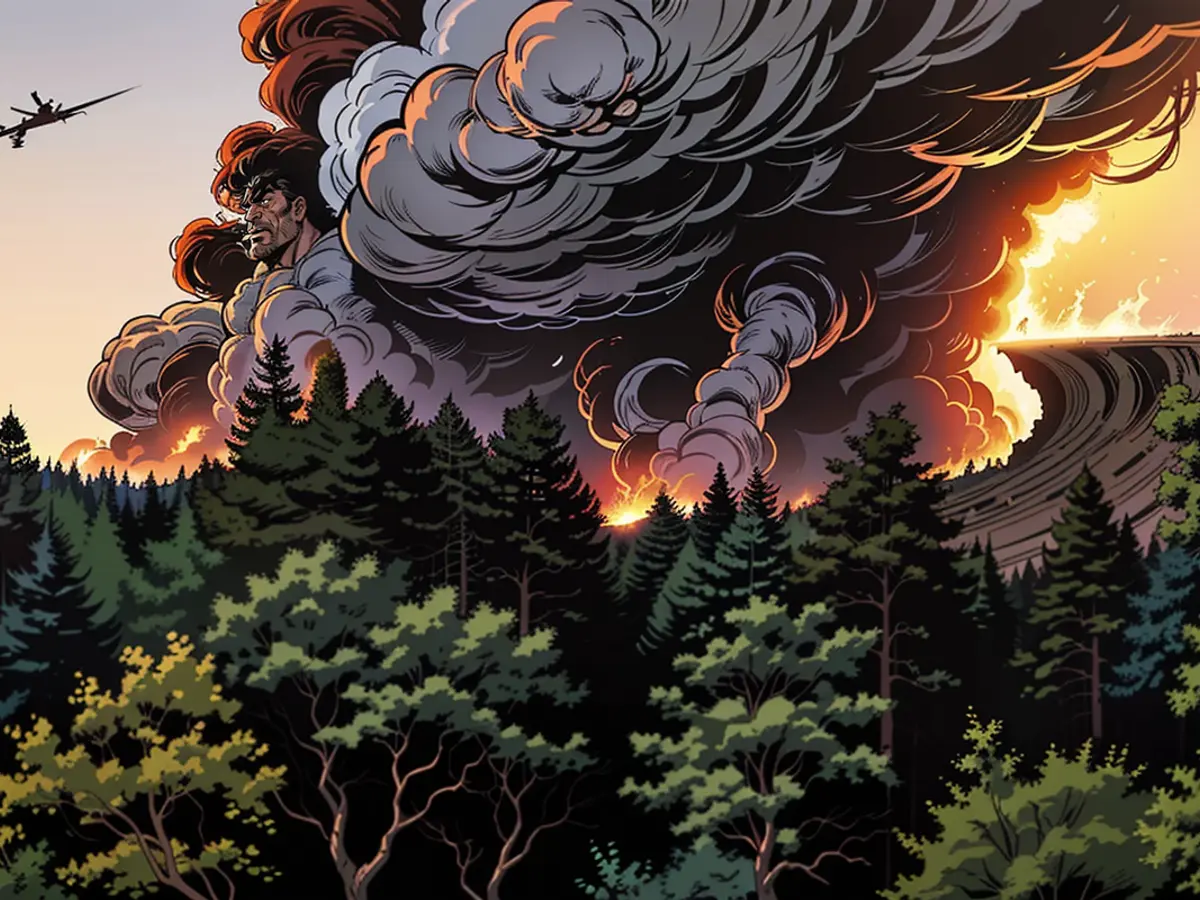Wildfire safety tips from the experts
Jon Heggie – who has been a division chief with the California Department of Forestry and Fire Protection (CAL FIRE) – knows what’s it’s like facing down a wildfire.
“I’ve been in my fair share of major incidents up and down the state,” Heggie told CNN Travel. “A description will not ever do it justice. The sights, the sounds, the feelings – the energy you feel from a large-scale incident is sensory overload,” he said.
“You can feel the radiant heat penetrating your body basically, the smoke conditions that kind of blur your vision. ... [The] sound of numerous trees being engulfed, it basically shakes the ground. It’s quite a dramatic event when you’re at the fire front of a large fire.”
The hard-earned experience of Heggie and other experts can help the rest of us increase our chances of survival in a wildfire – or avoid being trapped in one.
Learn about wildfires before you travel
Residents in wildfire-prone areas of the United States and the rest of the world might be used to keeping up with news of wildfires. It behooves travelers, who might have less experience, to do the same.
“Keep situational awareness. Pay attention to the local news. Pay attention to your local surroundings,” Heggie said. “... If you’re in a wildland area, you must pay attention to your surroundings because if a fire were to start, it can very quickly move in directions that can put people in harm’s way.”
Beth Pratt, California regional executive director of the National Wildlife Federation, owns a home just outside fire-prone Yosemite National Park and echoes that advice through decades of experience.
“Stay alert. Know you might need to be flexible with your plans or routes,” she said.
Nick Mott, co-author of the book “This Is Wildfire: How to Protect Yourself, Your Home, and Your Community in the Age of Heat,” said to pay attention to so-called red flag warnings.
“So basically, those are weather warnings when there’s high fire danger.” Watch for “super-high heat, high winds.”
“If you’re a traveler, it might be smart to stay out of an area that seems prone to burn,” he said.
The Red Cross also advises that you might want to leave an area before there’s even an official evacuation notice.
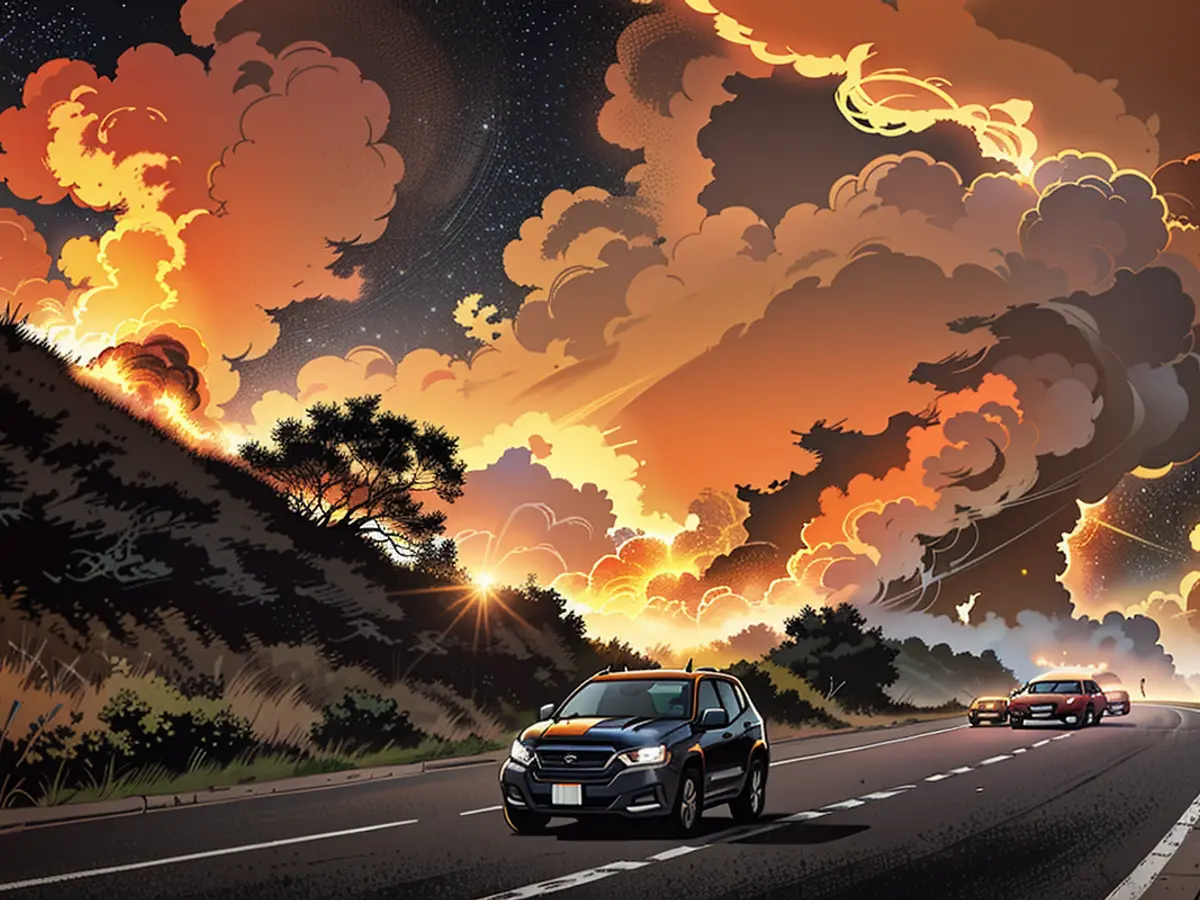
Some more preparedness tips:
• Get alerts to your phone: Sign up for alerts at readyforwildfire.org, Heggie suggested. On a road trip, listen to local talk radio and news stations. AirNow also tracks wildfires in North America. The European Forest Fire Information System (EFFIS) can help people traveling there. My Fire Watch can help with tracking in Australia.
• Be prepared to get away: When you’re in wildfire-prone areas, you should not only have an escape plan, but also an alternative escape route to that, Heggie said. And Mott added that travelers shouldn’t rely just on Google maps. Have a physical map at the ready in case service is interrupted.
• Have a survival kit: Keep plenty of water, extra food and clothes in the vehicle in case you do get caught up in an emergency – “all the things you would need to survive for camping,” Heggie said. The Red Cross suggests you have a battery-powered radio, too.
• Mask up: “Be sure to have a mask handy for the smoke, because air quality can get bad fast,” Pratt said. Use an N-95 mask, Mott advises.
• Be on the vanguard: If you see smoke or fire, report it immediately, Pratt said.
Expand your ‘when’ and ‘where’ fire horizons
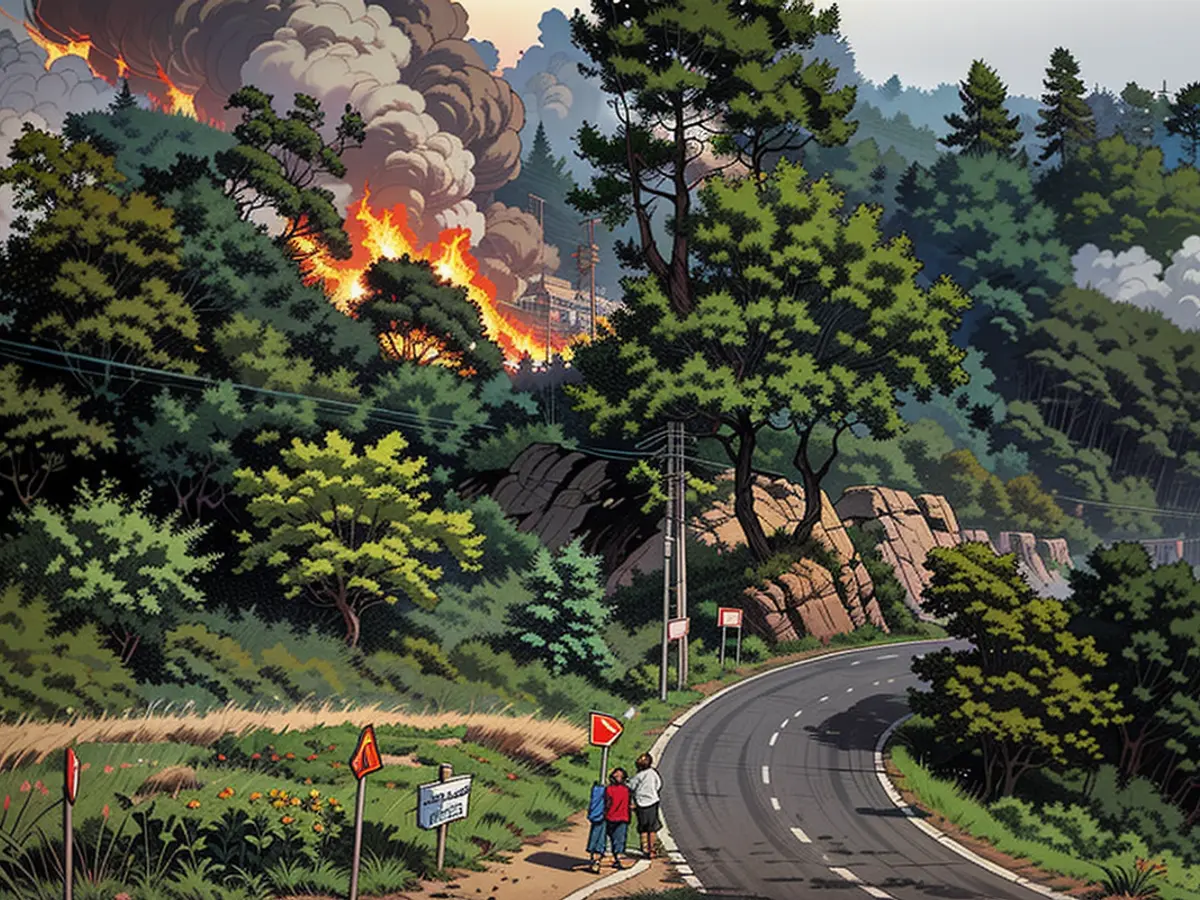
In the past, you could think of summer in California and other places out West as the “fire season.” But not anymore. Watch for big swings in conditions year to year and season to season.
“We don’t think about disaster until it happens,” Mott said. “We need to be thinking about wildfire, in particular, year-round – not just in fire season.”
Mott said we also are having to expand our horizons about where wildfires might happen. They aren’t just a mainland Western US problem, as the deadly 2023 Maui fires demonstrated. Any place with hot weather, dried-up brush and grass and high winds could have a wildfire, he said.
East of the Mississippi River, an area that generally gets more rain than the bulk of the West, can see wildfires. After a dry autumn, fires killed more than 10 people in the Gatlinburg, Tennessee, area in 2016.
And it’s a global hazard. As Europe baked in broiling heat in 2023, wildfires on the normally idyllic Greek island of Rhodes sent tourists fleeing a hellscape.
And 2024 is offering no relief. Spring wildfires broke out in the Amazonian rainforest in Venezuela, which suffered from drought. As a hot July was ending, the Park Fire in Northern California and a wildfire in the Jasper National Park area in the Rockies of Canada grabbed headlines.
If you’re in a vehicle
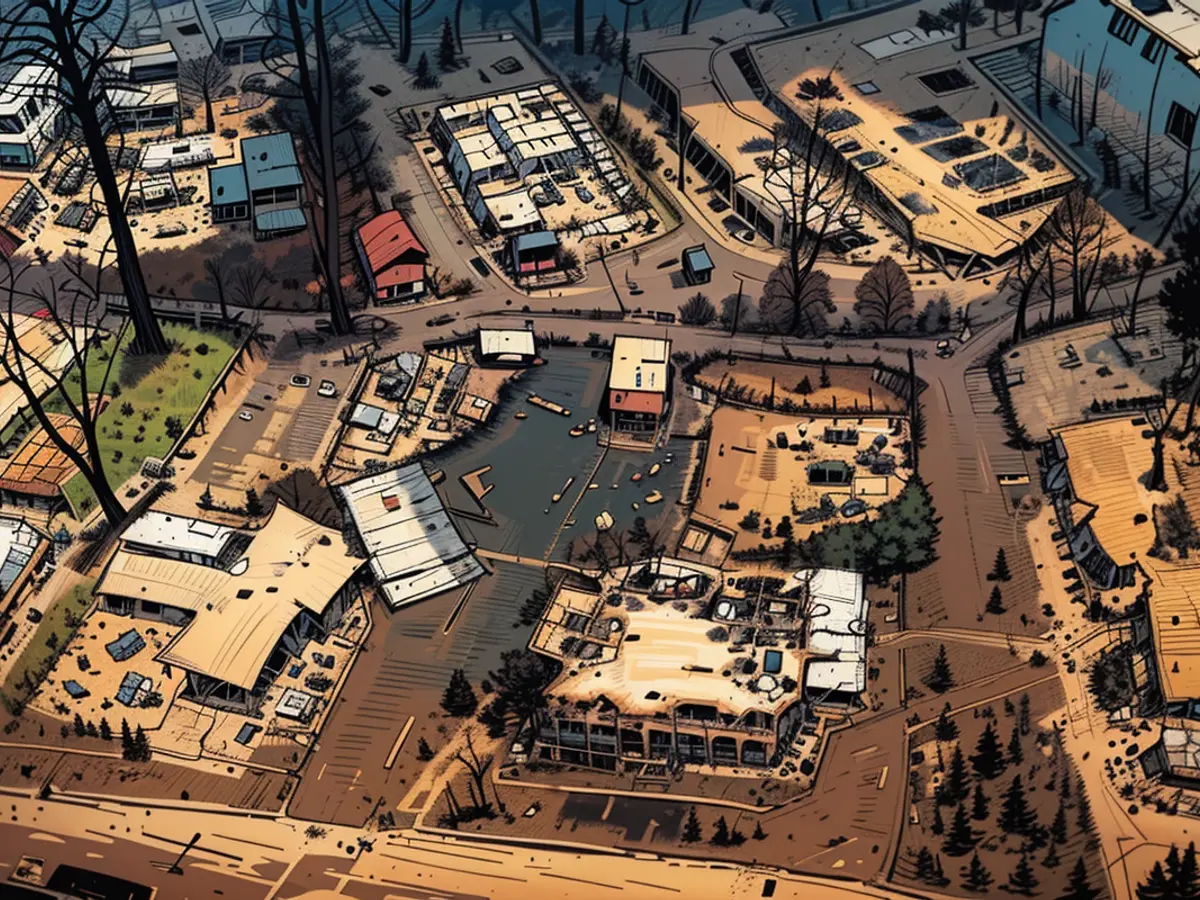
If you’re in a car and a wildfire is beginning to surround you, resist the urge to jump out.
“Vehicles are very good at protecting yourself from fires. If you’re completely overrun by fire, take shelter inside your vehicle – you’re going to be much better off than outside of the vehicle. ... It’s not a guarantee, but it’s better than nothing,” Heggie said.
“If you can see well enough, you should try to [drive] out of the fire area.
“Other tips if you’re in your vehicle from Readyforwildfire.org:
• Close all vehicle windows and vents
• Cover yourself with a jacket or blanket
• If possible, lie on the vehicle floor
If you’re in a structure
It’s the same idea with a house or other structure – you have a better chance inside it than outside, Heggie said. Let the fire sweep across the lot while you hunker down inside.
“There’s a good chance the structure will catch on fire, and after that, then you need to exit outside the structure, obviously.”
While riding out a wildfire inside a structure, Idaho Firewise offers these tips:
• Close all windows and doors and place wet towels under door and window openings.
• Have fire extinguishers out and ready to use.
• Fill sinks, tubs and buckets with water to put out any embers.
If you’re trapped outside during a wildfire
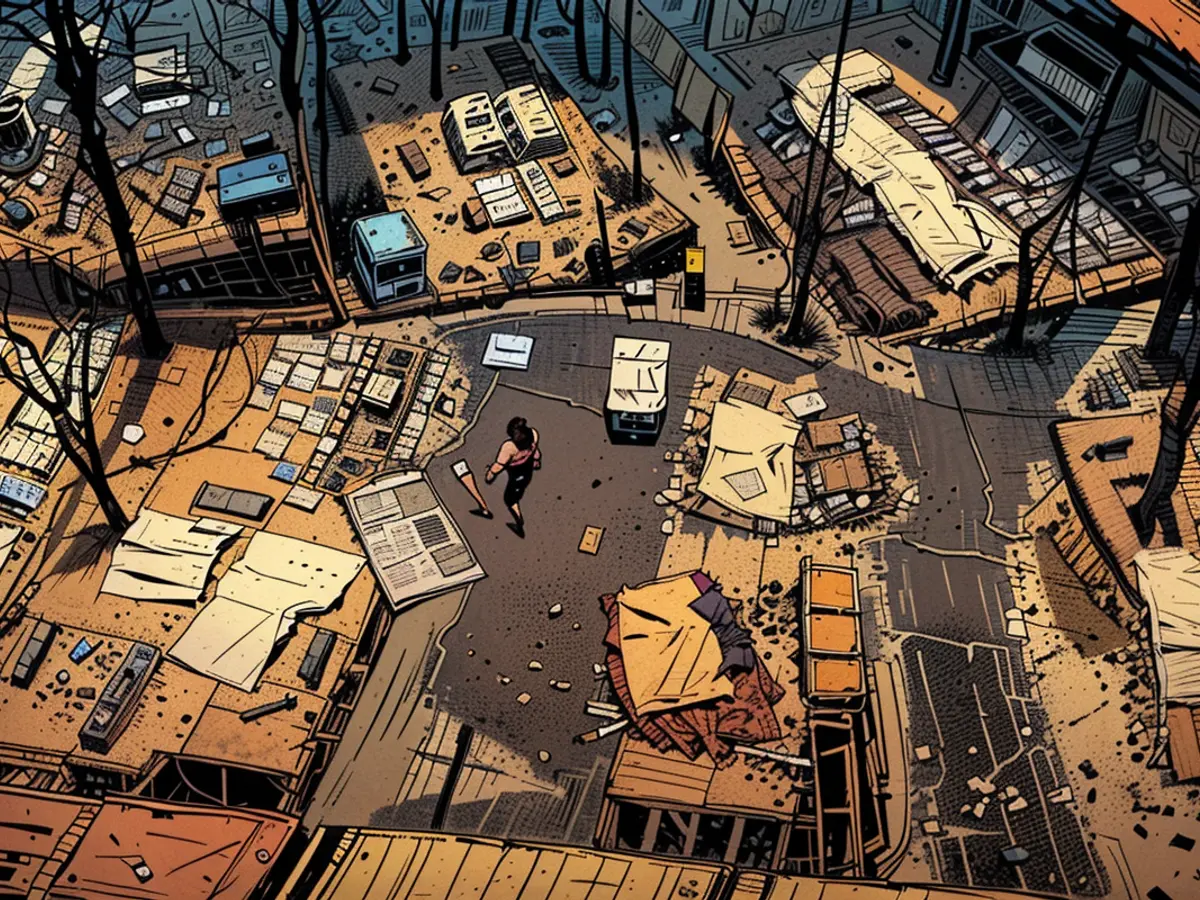
If you’re trapped outdoors with a wildfire approaching, call 911 and give them your exact location, Heggie said. Rescuers might be able to get a helicopter to you or firefighters can try to put the fire out around you.
Try to get away downhill but not into a gulch or ravine, Heggie said. It’s harder to escape hoofing it uphill. Plus, high-rising flames can reach toward uphill fuel, and the rising convective heat can expand uphill.
Heggie said the worst place to hunker down: low-lying gulches or ditches filled with dry vegetation. Stay out of ravines, which can act as fire funnels.
Take refuge in or near a body of water if you can reach one, Mott said, as some people did in Maui. “If you’re out in the wilderness or say out on the beach, get in the water. People have successfully waited out wildfires in lakes and rivers.”
If you’re trapped by a fire and can’t swim, Mott said get in as far as you’re comfortable – just don’t get over your shoulders or where you might be swept away.
If trapped outdoors, the University of California’s Agriculture and Natural Resources department seconds trying to find areas that won’t burn as readily or at all: irrigated fields, golf courses, paved parking lots and ponds. You can try to shelter by boulders and rock outcrops.
Dangers after the fire has swept through
Like mines left over after a war, wildfires leave potential dangers after they’ve burned through.
The Red Cross advises:
• Avoid hot ash, smoldering debris and live embers.
• Stay clear of damaged or fallen power lines, poles and downed wires.
• Watch for pits in the ground filled with ash. They may have hot embers you can’t see.
Mott said we should think ahead and prepare for wildfire but also “don’t worry yourself sick about it. I think that’s important for mental health, too, to find a positive outlook on the world and not think only about worst-case scenarios.”
This article was first published in 2023 and is updated periodically.
Learning about wildfires before traveling can significantly increase your safety. According to Jon Heggie, division chief with CAL FIRE, travelers should pay attention to local news and weather warnings, such as red flag warnings, as they indicate high fire danger. Additionally, having an escape plan and being aware of your surroundings can help you avoid being trapped in a wildfire area.
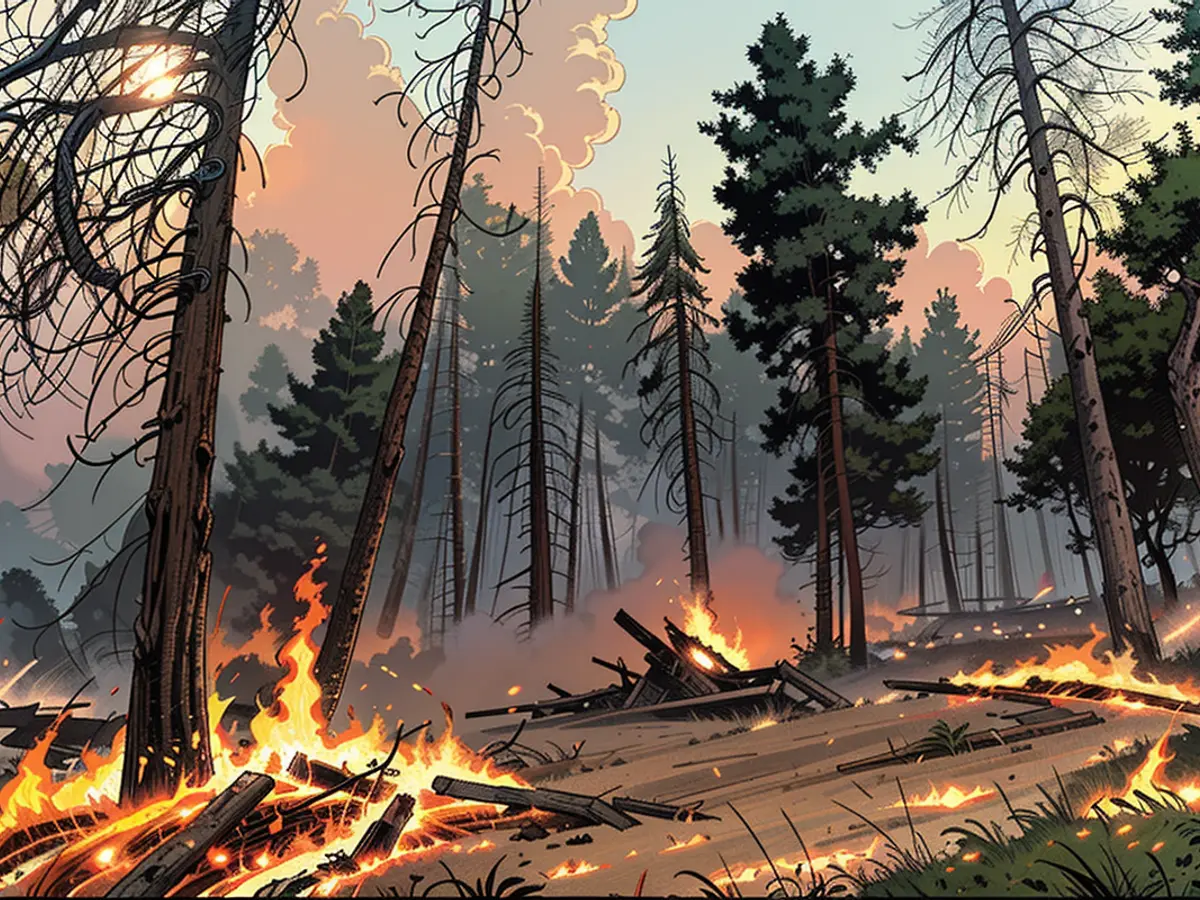
Read also:
- Fear of escalation in the Middle East: US Secretary of State Blinken travels to the region again
- Government circles: US Secretary of State Blinken to travel to Middle East again
- Bridging days 2024: How you can double your vacation this year
- Germany has wanderlust: how tour operators and airlines are looking ahead to the next travel year
